Le Chevalier D'Eon: Book 1
Introduction
2008 was the year that ADV to all intents and purposes went kaput. They're currently on the long road back from kaputz-ville, which means they're concentrating on re-releasing their existing titles and have little new to offer. It's all because their partnership with a Japanese investment firm called Sojitz went south in the middle of last year. It was with Sojitz money that ADV acquired several licences that they were in the process of releasing, and when Sojitz pulled out, those licences went with them. It was lurch time for many titles on both side of the Atlantic, leaving people with incomplete collections on their shelves. Le Chevalier D'Eon was one of the last titles to make it to completion in the UK before the guillotine fell. It's also still in plentiful supply in e-tailer warehouses if not on retail shelves. I don't know if that state of affairs will last long though. If I do know my corporate shenanigans, then Sojitz took the licence for Le Chevalier D'Eon with them when they parted ways with ADV (The fact that Funimation recently released a Chevalier boxset in the US is evidence of that), which means that only the first press discs are on sale in the UK, and when they are gone, ADV UK will not have the right to manufacture more. If you are going to buy this series, then better sooner than later. But what's so special about Le Chevalier D'Eon?
It's historical fiction of a comparatively rare type, that which sees real life historical characters playing roles in a completely fictional tale. It isn't exactly a limited alternate history as in those woeful 'what if Hitler won the war' novels, rather an arena where imaginations run wild, and the sky is the limit. A recent less impressive example would be Churchill: The Hollywood years, while more notable was that Doctor Who episode that saw him wander in and out of the life of Madame de Pompadour. In fact Doctor Who's original remit to be educational and entertaining back in the sixties saw a lot of the monster stories interspersed with these fictional histories. Of course the most classic example of real world characters used in a fictional story would be Alexander Dumas' Three Musketeers. It's fitting in a way that pre-Revolutionary France gets more than one mention, as it is the setting of Le Chevalier D'Eon. While fictional history is commonplace in anime, with historical figures appearing in many a story, most anime is concerned with the history of Japan, with the Warring States and Edo periods getting a lot of attention, and a couple of stories like Otogi Zoshi and Magical Shopping Arcade Abenobashi tying in to the earlier Heian period. For anime to tackle European history is a lot less common. The research and thought put into Le Chevalier D'Eon is head and shoulders above the rest, with a lot more emphasis on historical accuracy and attention to detail than you would expect. It's also a Production IG creation, which promises sublime animation, and an unparalleled effort put into making the look of the show as believable as possible.
For d'Eon de Beaumont, it should have been the culmination of his ascension to the highest levels of nobility, but the day he was elevated to the Royal Court at Versailles, was the day that his sister Lia's body was fished out of the river, in a coffin with the word Psalms daubed on the lid in blood. Since then, he's spent more time away from the court than not, searching for his sister's murderers, haunting the back alleys of Paris, and prowling the city streets at night. But his investigation leads to a dark conspiracy indeed, one that reaches to the highest levels of European royalty, involving the invocation of dark and mysterious powers by arcane spell-casting Poets. Fortunately, d'Eon is not alone, he has allies, and chief among them is Lia's soul. She's come back from the dead to avenge her murder, although to do so she has to possess her younger brother's body.
The first four episodes are presented on this disc from ADV.
1. d'Eon :. Lia
It's of concern to some people in the court that d'Eon de Beaumont is failing to take up his position at Versailles, instead devoting his time to the secret police, and finding his sister's murderer. For d'Eon it's of greater concern that his sister is denied a Christian burial, her body adulterated with quicksilver, unable to return to the earth. His investigation leads him to the disappearance of several women in Paris, and one night, the pleas of a woman in distress lead him to a harrowing find, the corpse of a woman stuffed into a crate, an arcane symbol marked on her forehead. The investigation leads further still to a Russian dignitary named Vorontsov, currently a guest of the Duc d'Orleans. It's literally a dead end. The secret police have overturned the wrong rock, and have uncovered a venomous scorpion. They are attacked, slaughtered, d'Eon's friend Bernis is captured, and d'Eon escapes with his life by sheer luck. His home isn't left untargeted, and a grisly message waits, demanding he turn over the evidence gathered so far in exchange for Bernis. It's a trap, Bernis has the arcane symbol on his forehead, quicksilver flows through his veins, and he's more monster than man. At the most crucial moment, d'Eon is knocked unconscious.
2. The Four Musketeers
When d'Eon comes to his senses, Bernis is dead, and he can only conclude that he was responsible. He returns to the Palace to recuperate, and also for an audience with the Queen. It's apparent now that Lia was also in service to France, and finding her killer means following her path. The Queen sets him on that path, and provides him with aid in the form of a young retainer named Robin. It's apparent that Queen Marie and Robin know more about Lia than d'Eon does, and back in a Paris tavern, Robin is in the process of telling him when the doors burst open to reveal police looking to arrest him for murder. But these police aren't what they seem, although there is unexpected assistance for d'Eon and Robin from a man at the tavern bar. Durand is a petty knight, who claims he has been sent to aid d'Eon by Lia's soul. Later that night they are met by Teillagory, the fencing master who taught d'Eon and Lia, and who also is determined to help him discover the truth about Lia's death, but before the reunion gets any further, the group are surrounded by Gargoyles, people converted into monsters by arcane means just as Bernis was.
3. Sword Of Indignation
Robin recognises that there is a Poet controlling the Gargoyles, and tells d'Eon that he is the one that they want. It's Lia who has to capture him in the end though, after d'Eon is knocked through a wall, and left unconscious. When d'Eon awakens, they are back at a safe house, with the poet Caron in custody. Questioning him will be another matter, as he is remarkably loyal to his master, and tight-lipped. D'Eon gets more information from Robin though, although hearing that he is possessed by his sister's soul is hard to accept. But when Caron is cut loose and set free, it becomes clear that they have a traitor in their midst. While Teillagory and d'Eon pursue the fleeing Poet, Robin follows Durand.
4. Follower of the Revolution
The four reunite in a crypt under Notre Dame, although the confrontation with Durand is cut short when the King appears. Durand's actions are explained, and d'Eon is told that if he continues down the same path as his sister, he'll face the same dangers. Accepting means being inducted into the King's employ, just as his sister was, becoming members of Le Secret du Roi. Before they can continue their mission, Robin insists that they meet with the Queen as well. Her mystical abilities will be of use to d'Eon, who still balks at the idea of hosting his sister's spirit, especially when she is so enraged, anguished and determined to avenge herself. The Queen advises him to accept, for Lia's sake, but he's still conflicted. Not the best way to begin their pursuit of the Russian spy Vorontsov, especially when Caron is still on the loose, re-empowered by a ritual performed by the Comte Saint-Germain.
Picture
The 1.78:1 anamorphic transfer is clear and sharp, although there is the usual smidgen of NTSC-PAL conversion issues to put up with. It's nowhere near as bad as it could be though, and by and large this is in the top range of anime transfers. It needs to be good, as it's a Production IG animation, with all the attention to detail and reputation for excellence that implies. The character designs are realistic rather than stylised, the costume designs are astounding, and Paris of the eighteenth century is brought to vivid life. The Palace of Versailles is stunningly recreated with the aid of CGI, and the final result is a very high budget look. The animation is top-notch as well; it's worth seeing some of the fencing sequences as an example of the research and veracity.
Sound
You have a choice of DD 5.1 English and Japanese soundtracks, along with an optional translated English subtitle track, or simple signs to accompany the English track (The signs more often than not translate French text onscreen, not Japanese in this case). The surround is very impressive, certainly working well in the action sequences, and also conveying the orchestral music with a suitable level of grandeur. My choice as always was for the Japanese track, but from what I sampled of the English dub it is exceptional, well cast and well performed. The 5.1 Surround is also a tad more expressive in the English dub, so that may swing it if you waver over which language to listen in.
Extras
As I mentioned, Funimation recently released a budget boxset in Region 1, with all 24 episodes and extras squeezed onto 5 discs, and I was briefly tempted by the economy, until I learned what I would be missing out on. Each of the single volume discs from ADV comes with liner notes and a booklet, which the collection omits. In this case it's worth paying a little more.
This first disc has character designs and info for Lia and d'Eon de Beaumont printed on the inside of the Amaray cover.
The booklet, entitled Chapter 1 runs to 16 pages, and offers a Character Relationship Chart (necessary in a story as complex as this, some information on d'Eon's sword, a glossary of key words used in the show, an interview with Chief Writer Yasayuki Muto, and the first part of a prequel side story presented in the form of a script. There are also a couple of pages of storyboard to scene comparison.
On the disc you'll find two commentaries. The first is the Production Commentary with episode 1, with Steve Foster (ADR director), joined by David Matranga (D'Eon) talking about the maturity of the show, keeping the mystery of the show through the translation process, the casting process and a forthcoming photo shoot. Be warned that this track is exceedingly profane. The second commentary accompanies the second episode, and has media coordinator Janice Williams joining translator Amy Forsyth to talk about their contribution to the show. They talk about the historical setting, the real life characters and some of the difficulty they had with the biblical texts quoted in the story.
The Historical Notes offer the truth behind the fiction, giving a glimpse at the setting of the story, as well as some of the real life characters that get fictionalised in it. There are 9 articles to read, compiled with the aid of the Encyclopaedia Britannica, and Wikipedia, and the real life d'Eon de Beaumont actually seems a far more colourful character than his fictional counterpart.
You'll find the Japanese promo video for the show, the Japanese trailer, two clean opening sequences, two clean closing sequences, trailers for Pani Poni Dash, Jinki Extend, Gilgamesh, and Peacemaker, as well as a preview for Volume 2 of Le Chevalier D'Eon.
The disc gets the usual animated menus, in this case very evocative and well accomplished, as well as the usual jacket picture.
Conclusion
Looking back at those episode synopses, they aren't all that pretty. In fact they make pretty confusing reading, with a whole lot of stuff happening, loosely thrown together, and not making all that much sense. It's all pretty random and unconnected, which is exactly how I felt about these first four episodes of Le Chevalier D'Eon. Then again, that is the whole point. This isn't a show that is going to give you everything on a plate, it's not going to hold your hand as it patiently guides you through the narrative, and it certainly isn't going to make it easy for you to get a handle on what the story is all about. It wants you to be as out of your depth as the main characters, you're meant to share in their confusion and befuddlement, as well as share their shock when extraordinary events start happening in an apparently ordinary world.
In that respect, Le Chevalier D'Eon's first volume accomplishes what it sets out to, but it means that if you are looking for something simple, accessible and relaxing, this first volume will probably put you off. But, while the story lacks an immediate hook, there is much to appreciate about this first volume, not least the production design. This is probably up there with the best anime I have seen. It is simply beautiful. The level of care, the attention to detail, the apparent delight in offering as authentic an experience as possible just oozes from every frame. You may not understand what is going on, but your eyes will revel in it. The show has grand scope and vision that you usually expect in the most lavish of theatrical productions, and it's also reflected in the sound design and music score. Le Chevalier D'Eon gets the full orchestral treatment, once again indicative of cinematic aspirations. This is a series that wants to be seen on as big a screen as possible. It also tells in the animation. It worth seeing some of the sword fights as an example. Most anime sword fights usually involve Samurai, and usually consist of fast, abrupt, grandiose movement, followed by a lengthy freeze frame, before one of the antagonists crumbles. Fencing is a completely different animal, far more fluid, imaginative, faster and graceful. The clash of swords has to be quick, varied and ongoing. Le Chevalier D'Eon manages to capture all this with a level of detail that implies a whole lot of research and a superhuman effort on the part of the animators. When you see the sheer beauty with which they capture the footwork of the fighters, it simply takes the breath away.
As I said, the story is a little hard to embrace at this point, with so many tangents, false starts and dead ends; it truly lives up to its mystery billing. At the surface, it looks like just the sort of show that I would avoid, dabbling in the horror genre with its depiction of Gargoyles as some sort of mercury fuelled zombies, but the enigma at the heart of the story overwhelms that. It's a far deeper story than it looks, the historical setting gives it an overall richness and complexity, and the biblical overtones add to the allure. For once, this isn't one of those cod representations of Christianity that anime doles out from time to time, with crime fighting nuns and vampire priests. This is a more accurate depiction of an era where God literally was at the heart of everything. People lived their lives around the church, a force as powerful as the monarchy, and you can understand when d'Eon's concern for the fate of his sister's immortal soul leaves him bereft and searching for a way to save her. It also turns out that the conspiracies that are unfolding have arcane aspects of Christianity at their heart, it's behind the creation of the Gargoyles, and the political manoeuvrings at the highest level of the French Court. Once again, not a lot of it makes sense in these first four episodes, but the vast palette that the storywriters are painting with make it a juicy prospect to see just what will unfold.
Le Chevalier D'Eon's characterisations are also something special. Given how far the story departs from history, you could say that the historical characters in the story are really just gimmicks, probably bearing no resemblance to the real life characters on which they are based. But the setting and history does play a part, and given the higher level court machinations and politics in the show, you can't get away from certain real world aspects of the depiction of Louis XV, the Queen Marie, and Madame de Pompadour. Also, in a medium better suited to operatic grandiose performances, and obvious outbursts of emotion, Le Chevalier D'Eon's characters operate with a surprising degree of subtext, brought to life more through actor performance, but also with a fair amount of subtlety to the animation. No one's motives are clear at this point, except maybe d'Eon. Already characters are behaving unexpectedly, or with ulterior motives, and I find that I can't trust anyone beyond d'Eon. I'm asking why certain characters act in a certain manner, only for the answers to surprise me in a later episode. At this point, I find even Lia de Beaumont difficult to trust, and d'Eon's need to redeem her soul is at the heart of the story.
This would be a low marked volume, simply for its sheer ambiguity and lack of direction at this point. These aren't traits to be derided in a mystery, but without seeing how things develop in subsequent volumes, I have to take this single volume at face value. Then again, at face value, it is one of the most beautiful anime I have yet seen, which automatically bumps the score back up. Volume 2 is next on the to watch pile.

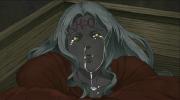
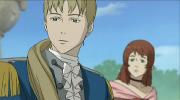
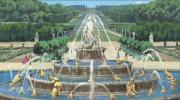
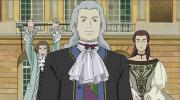
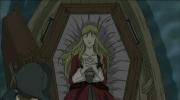

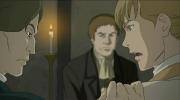
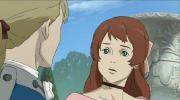

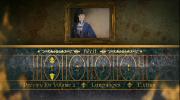
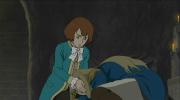
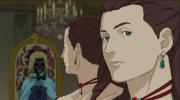


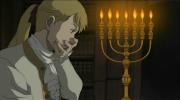
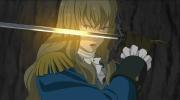
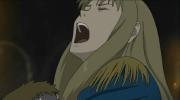

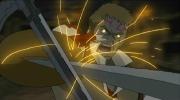
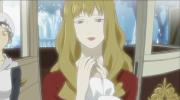

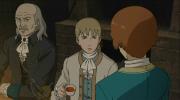
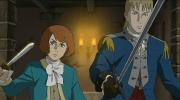
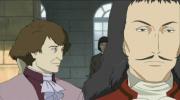
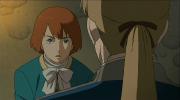
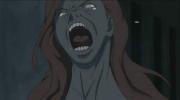
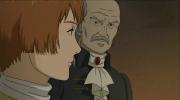
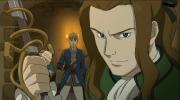
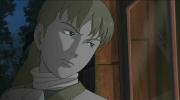












































Your Opinions and Comments
Be the first to post a comment!